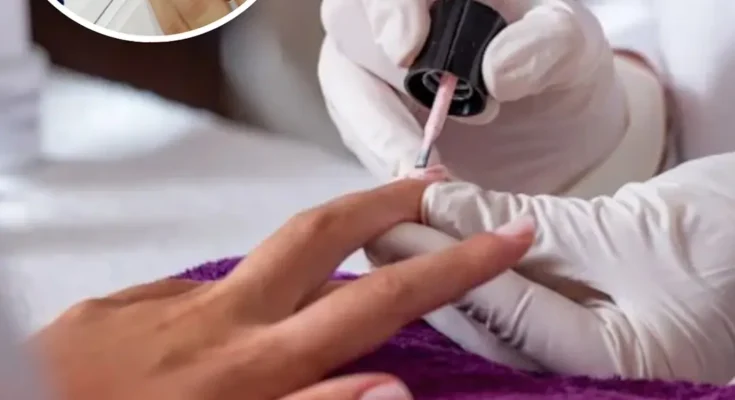A major new European Union regulation officially took effect on
September 1, 2025, banning the use of TPO (trimethylbenzoyl
diphenylphosphine oxide) — a common ingredient in gel nail polish.
The move has sparked controversy in the beauty industry, particularly
because the ingredient remains legal and unregulated in the United
States.
What Is TPO and Why Did the EU Ban It?
TPO is a photoinitiator, the chemical that allows gel polish to harden
quickly under UV or LED lamps, giving manicures their glossy, chip-
resistant finish.
After reviewing multiple studies, the EU classified TPO as
“carcinogenic, mutagenic, or toxic to reproduction.” While large-scale
human trials are lacking, animal studies suggest possible links to:
Reproductive health issues
Hormonal disruption
Long-term cellular damage
EU regulators acted under the precautionary principle, banning TPO
despite limited direct human data. “It’s more of a precautionary move
than a response to conclusive human evidence,” explained
dermatologist Dr. Hannah Kopelman.
A Divided Beauty Industry
The EU first announced its decision in May 2024, but the enforcement
date arrived quickly and without exceptions. Until now, TPO was
allowed in professional use at concentrations up to 5%. From
September 1 onward, any product containing TPO is outlawed.
This sudden change has:
Left salons scrambling to replace banned products
Forced businesses to discard costly inventory
Hit small, independent salons particularly hard
Many in the industry call the rollout “rushed” and “commercially
damaging”
Why the U.S. Hasn’t Followed
In contrast, the FDA has not restricted TPO in nail products. American
salons can still legally use TPO-containing gels, and no health warnings
have been issued.
This difference isn’t unusual:
The EU often bans ingredients based on suggestive evidence.
The U.S. typically waits for large-scale human studies before acting.
Past examples include BHA, BHT, and azodicarbonamide, which are
restricted in Europe but still legal in U.S. cosmetics and foods.
Other Risks Linked to Gel Manicures
TPO isn’t the only concern. Experts warn of additional health risks with
gel nails:
UV/LED dryers: A 2023 Nature Communications study found repeated
UV exposure can cause DNA damage and raise skin cancer risk.
Dermatologists recommend protective gloves or sunscreen during
curing.
Nail damage: Buffing nails too thin weakens the protective barrier,
leading to breakage, splitting, or infection.
“Greenies” infection: Bacteria like Pseudomonas aeruginosa can grow
under lifting gel, turning nails green or blue. Though usually not life-
threatening, it can be dangerous for those with weak immune systems.
What Consumers and Salons Can Do
In Europe: Salons must dispose of all TPO products immediately and
switch to TPO-free alternatives.
In the U.S. and elsewhere, consumers can protect themselves by:
Checking ingredient labels for TPO
Asking salons about TPO-free options
Using sunscreen or UV-blocking gloves during curing
Allowing breaks between manicures to let nails recover
Seeking medical care for discolored or infected nails
The Future of Nail Safety
The EU ban has split opinions:
Supporters call it a step toward safer cosmetics.
Critics warn of economic disruption and lack of solid human data.
Advocacy groups are pressing U.S. regulators to align with Europe,
arguing consumers shouldn’t be exposed to chemicals deemed unsafe
elsewhere. Whether the FDA will follow remains uncertain.
For now, one thing is clear: as of September 1, 2025, TPO is out of
fashion in Europe — marking the start of a new chapter in nail care
safety.



